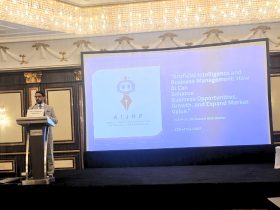Dubai – Masaader News
In the past 50 years, the amount of water in the open ocean with zero oxygen has gone up more than fourfold. In coastal water bodies, including estuaries and seas, low-oxygen sites have increased more than 10-fold since 1950. As the Earth warms, scientists expect oxygen levels to continue dropping in both of these zones. To halt the decline, the world needs to rein in both climate change and nutrient pollution, an international team of scientists assert in a new paper published January 5 in Science magazine.
The study comes from the Global Ocean Oxygen Network (GO2NE), a new working group created in 2016 by UNESCO’s Intergovernmental Oceanographic Commission (IOC), representing 21 institutions in 11 countries. The review paperis the first to take such a sweeping look at the causes, consequences and solutions to low oxygen worldwide, in both the open ocean and coastal waters. The article highlights the biggest dangers to the ocean and society, and what it will take to keep Earth’s waters healthy and productive.
The Stakes
“Approximately half of the oxygen on Earth comes from the ocean,” says Vladimir Ryabinin, Executive Secretary of the Intergovernmental Oceanographic Commission that formed the GO2NE group. “However, combined effects of nutrient loading and climate change are greatly increasing the number and size of ‘dead zones’ in the open ocean and coastal waters, where oxygen is too low to support most marine life.”
In areas traditionally called “dead zones,” like those in Chesapeake Bay (United States) and the Baltic Sea, oxygen plummets to levels so low many animals suffocate and die. As fish avoid these zones, their habitats shrink and they become more vulnerable to predators or fishing. But the problem goes far beyond “dead zones,” the authors point out. Even smaller oxygen declines can stunt growth in animals, hinder reproduction and lead to disease or even death. It also can trigger the release of dangerous chemicals such as nitrous oxide, a greenhouse gas up to 300 times more powerful than carbon dioxide, and toxic hydrogen sulfide. While some animals can thrive in dead zones, overall biodiversity falls.
Climate change is the key culprit in the open ocean. Warming surface waters make it harder for oxygen to reach the ocean interior. Furthermore, as the ocean as a whole gets warmer, it holds less oxygen, in an unfortunate twist, animals in warmer waters need more oxygen. In coastal waters, excess nutrient pollution from land creates algal blooms, which drain oxygen as they die and decompose, even as it is disappearing.
People’s livelihoods are also on the line, the scientists reported, especially in developing nations. Smaller, artisanal fisheries may be unable to relocate when low oxygen destroys their harvests or forces fish to move elsewhere. In the Philippines, fish kills due to low oxygen in a single town’s aquaculture pens cost more than $10 million. Coral reefs, a key tourism attraction in many countries, also can waste away without enough oxygen.
Some popular fisheries could benefit, at least in the short term. Nutrient pollution can stimulate production of food for fish. In addition, when fish are forced to crowd to escape low oxygen, they can become easier to catch. But in the long run, this could result in overfishing and damage to the economy.
Winning the War: A Three-Pronged Approach
A healthy ocean is vital for the survival of the planet. It contributes to local, national and global economy with around 350 million jobs worldwide. The blue economy opens tremendous opportunities, not least for developing countries, through renewable energy, tourism, aquaculture, or biotechnology. Deoxygenation poses a threat to these many benefits humans derive from marine ecosystems.
To keep low oxygen in check, the scientists say the world needs to take on the issue from three angles:
§ Address the causes: nutrient pollution and climate change, via dramatically reducing agricultural fertilizer use and GHG emissions. While neither issue is simple or easy, the steps needed to win can benefit people as well as the environment. Better septic systems and sanitation can protect human health and keep pollution out of the water.
§ Protect vulnerable marine life and ocean resources. As the expansion of low oxygen areas seems unavoidable in some places, it is crucial to protect at-risk fisheries from further stress. According to the GO2NE team, this could mean creating marine protected areas or no-catch zones in areas animals use to escape low oxygen, or switching to fish that are not as threatened by falling oxygen levels.
§ Improve low-oxygen tracking worldwide. Scientists have a decent grasp of how much oxygen the ocean could lose in the future, but they do not know exactly where those low-oxygen zones will be. Enhanced monitoring especially in the southern hemisphere, experimental work to improve the understanding of processes causing and impacted by deoxygenation, as well as the development of advanced, and numerical models will help pinpoint which places are most at risk and determine the most effective solutions.
The findings presented in this article and the many related activities to this international endeavor will contribute to the UN Decade of Ocean Science for Sustainable Development. Advancing our knowledge about the threat of ocean deoxygenation, warming, acidification, as well as numerous other human caused stressors will be key to ensure a sustainable management of our common good – the ocean.
“This is a problem we can solve,” said Denise Breitburg, lead author and marine ecologist with the Smithsonian Environmental Research Center. “Halting climate change requires a global effort, but even local actions can help with nutrient-driven oxygen decline.” As proof, Breitburg points to the ongoing recovery of Chesapeake Bay, where nitrogen pollution has dropped 24 percent since its peak thanks to better sewage treatment, better farming practices and successful laws like the Clean Air Act. While some low-oxygen zones persist, the area of the Chesapeake with zero oxygen has almost disappeared. “Tackling climate change may seem more daunting,” she added, “but doing it is critical for stemming the decline of oxygen in our oceans, and for nearly every aspect of life on our planet.”
Kirsten Isensee, Programme Specialist at IOC-UNESCO, highlighted that “Ocean Deoxygenation – is taking place all over the world, as a result of the human footprint, therefore we also need to address it globally. And I am positive that the international effort GO2NE can help at the local, regional and global level to better adapt and to hopefully reduce the impact and extent of low oxygen areas in the ocean.”
***
The Global Ocean Oxygen Network (GO2NE) is a scientific working group organized by the Intergovernmental Oceanographic Commission, part of the United Nations Educational, Scientific and Cultural Organization (UNESCO). Established in 2016, its scientists from around the world are committed to providing a global and multidisciplinary view of deoxygenation, advising policymakers on countering low oxygen and preserving marine resources.











